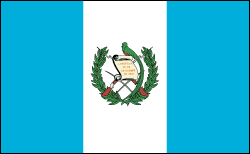Guatemala History


Protracted Civil War Results in Huge Number of Civilian Deaths
After Ubico's overthrow in 1944 by the “October Revolutionaries,” a group of left-leaning students and professionals, liberal-democratic coalitions led by Juan José Arévalo (1945–1951) and Jacobo Arbenz Guzmán (1951–1954) instituted social and political reforms that strengthened the peasantry and urban workers at the expense of the military and big landowners, like the U.S.-owned United Fruit Company. With covert U.S. backing, Col. Carlos Castillo Armas led a coup in 1954, and Arbenz took refuge in Mexico. A series of repressive regimes followed, and by 1960 the country was plunged into a civil war between military governments, right-wing vigilante groups, and leftist rebels that would last 36 years, the longest civil war in Latin American history. Death squads murdered an estimated 50,000 leftists and political opponents during the 1970s. In 1977, the U.S. cut off military aid to the country because of its egregious human rights abuses. The indigenous Mayan Indians were singled out for special brutality by the right-wing death squads. By the end of the war, 200,000 citizens were dead.
A succession of military juntas dominated during the civil war, until a new constitution was passed and civilian Marco Vinicio Cerezo Arévalo was elected and took office in 1986. He was followed by Jorge Serrano Elías in 1991. In 1993, Serrano moved to dissolve Congress and the supreme court and suspend constitutional rights, but the military deposed Serrano and allowed the inauguration of Ramiro de Leon Carpio, the former attorney general for human rights. A peace agreement was finally signed in Dec. 1996 by President Álvaro Arzú Irigoyen.







